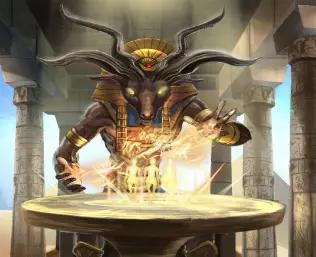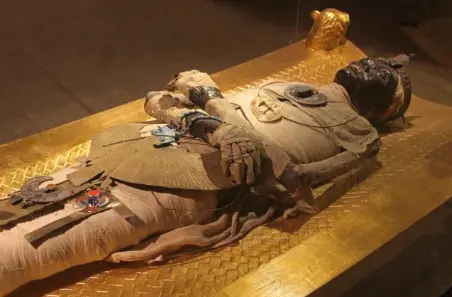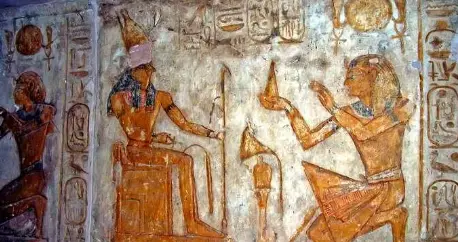Introduction
Imagine going back thousand years to find a land with pyramids, a river that floods regularly, and prosperous agricultural society. Ancient Egypt had thousands of people wearing loincloths, and the land was rich in limestone throughout the desert. It was a unique and fascinating culture, unlike what we experience in the current countries. Egyptians had fascinating religious beliefs, especially about death and the afterlife. They firmly believed in the afterlife as they wanted to ensure a peaceful and happy experience. In the book Death and the Afterlife in Ancient Egypt, Taylor says that Egyptians believed in the existence of the gods, the living, and the dead (Taylor, 2001). Primarily, they worshipped many different gods and goddesses, making it a polytheistic society. The gods were considered spiritual beings that determined the fates of humans. For example, the goddess Hathor was providing love and childbirth. They created a sculpture resembling a human body and a head with hones as the goddess Hathor (Taylor, 2001). Also, they had the god Khnum who was responsible for creation. He was portrayed as a divine potter modeling. Besides, ancient Egypt possessed King, Society, and Cosmos that maintained significant relationships and played diverse roles in religion and politics.
Different gods and goddesses
Egyptians did not only believe in many gods and goddesses but also had a different view on death. Many people usually know that the death of bodies is the termination of selves; however, Egyptians believed that death is like changing to a different kind of existence. They took it as something to enjoy and rather than seeing it as an end. In other words, they believed life is a temporary stage so, death is a transitional period into an afterlife (García, 2021). Afterlife is eternal, and life is transitional. To prepare body and soul, the ancient Egyptians made sure the afterlife was pleasant. They believed that man compose of the physical and non-physical elements and six entities. The physical part was the body, while the non-physical features include shadow, name, spirit (ka), personality (ba), and immortality (akh) (García, 2021). The non-physical aspect of a man was the ka. In the book Gardner’s Art Through the Ages, Kleiner says that the spirit was created during birth by the deity Khnum, a hieroglyphic symbol by upraised human arms (Kleiner, 2016). The ka is therefore described as the pillar of life. Hence, Egyptians believed that the ka would continue to eternal life once the body died. As the body disintegrates upon death, Egyptians found a way to preserve the human body so that ka could live afterward (Kleiner, 2016). They underwent the process of mummification to preserve ka statuses and the body.
Figure 1: Egyptian Deity Khnum
Religious Beliefs: Death and the Afterlife
Mummification began in the Fourth Dynasty BCE and was performed by embalmers through a particular procedure. Herodotus explains that the embalmer could first remove the deceased’s organs after the grade of mummification was identify by the people who brought the body (Abdel-Maksoud, & El-Amin, 2011). The finest quality was the best and most expensive, the second grade was cheaper, and the third grade was the most affordable and most uncomplicated. The embalmers agree about the payment with the people who brought the body. People such as Pharaohs were considered divine and powerful beings; therefore, they were treated with the finest grade of embalming (Abdel-Maksoud, & El-Amin, 2011). However, every grade used did not interfere with the deceased’s heart as it was considered vital. With mummification, the view of death and the afterlife among the Egyptians was a severe and unique aspect of their culture. It cannot be compared to burial or cremation that is performed in present society.
Figure 2: Mummification in Ancient Egypt
King, Society, and Cosmos
In ancient Egyptian society, the king occupied a significant position and acted as guarantor of order from god and power to rule over humanity. Furthermore, the king exited as a responsible individual for cults of the dead, including the predecessors. As a result, the king’s dominance in religion provided a central political power and role in society. The primary name of the king, “Horus,” originated from the chief god Horus which was introduced in the 14th dynasty.
Figure 3: Ramses II making an offering to Horus
Conclusion
To conclude, ancient Egypt possesses significant religious, cultural, and political practices. Moreover, religion took center stage as it profoundly influenced the political system and society’s beliefs. Notably, essential factors such as king, culture and cosmos, religious beliefs including death and the afterlife, and different gods and goddesses played an integral role in shaping the community of ancient Egypt.

References
Abdel-Maksoud, G., & El-Amin, A. R. (2011). A REVIEW ON THE MATERIALS USED DURING THE MUMMIFICATION PROCESSES IN ANCIENT EGYPT. Mediterranean Archaeology & Archaeometry, 11(2).
Dorman, P. F. (2015). Ramses II making an offering to Horus. Britannica. https://www.britannica.com/topic/ancient-Egyptian-religion/Sources-and-limitations-of-ancient-and-modern-knowledge
Egyptian Deity Khnum. (2021, February 12). [Photograph]. Pinterest. https://www.pinterest.com/pin/artstation-khnum-rod-wong–351773420885671781/
García, J. C. M. (2021). Egyptology and Global History: An Introduction. Journal of Egyptian History, 13(1-2), 5-10.
Kleiner, F. S. (2016). Gardner’s Art through the Ages: The Western Perspective, Volume I (Vol. 1). Cengage Learning.
Mummification in Ancient Egypt. (2021, March 10). [Photograph]. The Magazine. https://www.discovermagazine.com/planet-earth/the-mummification-process-how-ancient-egyptians-preserved-bodies-for-the
Pinterest. (2021, June). Khnum, Rod Wong. Pinterest. https://www.pinterest.com/pin/artstation-khnum-rod-wong–351773420885671781/
Sarkar, D. (2021, March 10). Ancient Egyptian mummy showcased as tourist attraction among other older artifacts near Cairo, Egypt. THE MAGAZINE. https://www.discovermagazine.com/planet-earth/the-mummification-process-how-ancient-egyptians-preserved-bodies-for-the
Taylor, J. H. (2001). Death and the afterlife in ancient Egypt. University of Chicago Press.









